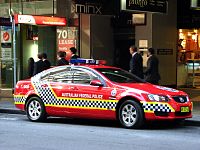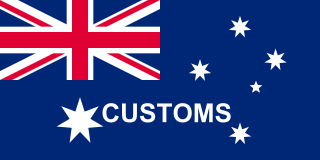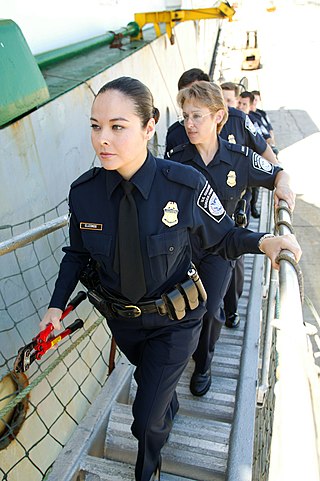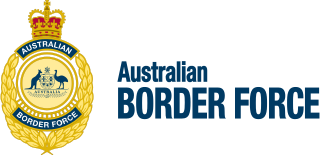History

The Australian Protective Service (APS) was established in 1984 when 420 Constables transferred from the Australian Federal Police.
The APS followed a tradition dating back through its predecessors the Protective Service component of the Australian Federal Police, the uniformed branch of the former Commonwealth Police and the former Peace Officer Guard. What follows is a brief history of the Commonwealth Law Enforcement and Security Service which led up to the inception of the Australian Protective Service (APS).
Australia's first Commonwealth Police Force was short lived – surviving only two years between December 1917 and 1919 being set up following an altercation between the then Prime Minister of Australia, William Morris (Billie) Hughes and a heckler at a rally in Queensland after local police sergeant declined to become involved 'in a Federal matter'. In later years discussions between Commonwealth government and state authorities resulted in the birth of the Commonwealth Investigation Service – a plainclothes unit with the responsibility of conducting investigations into specific breaches of Commonwealth legislation. The early 1930s saw the formation of the Peace Officer Guard with the aim of protecting Commonwealth property and interests. The Peace Officer Guard (POG) operated at such establishments as munitions factories, research facilities and certain Commonwealth Government departments. The Australian Security Intelligence Organisation (ASIO) came into existence in 1949, absorbing some of the functions of the Commonwealth Investigations Service and assuming new areas of responsibilities. The Commonwealth Police was re-formed in 1960, absorbing both Peace Officer Guards and Commonwealth Investigations Service officers. In 1975 the most ambitious plan to restructure Australia's national police service was attempted by the Commonwealth Government. An amalgamation of Commonwealth Police, Northern Territory Police and Australian Capital Territory Police forces, Department of Customs and Excise and Special Reports Branch of the Department of Immigration would have produced the "Australia Police". However, the amalgamation was abandoned later the same year following a change of Government. The bombing of the Hilton Hotel in Sydney during the Commonwealth Heads of Government Meeting (CHOGM) on 13 February 1978 prompted the Federal Government to commission an inquiry into Australia's national police service by former London Metropolitan Police Commissioner, Sir Robert Mark. As a consequence of this inquiry, on 19 October 1979, the Commonwealth Police and the Australian Capital Police Forces were amalgamated to form the Australian Federal Police which, shortly after, was expanded to assume the functions of the former Narcotics Section of the Bureau of Customs.
The Australian Federal Police was initially established as a two component force, with General Policing and Protective components. As previously mentioned, prior to 1960, Federal Law Enforcement was carried out by two organisations, the Commonwealth Investigative Service and Peace Officer Guard. The primary function of the Protective Service Component of the AFP was to continue the duties which were originally laid down for the POG. On 14 December 1983 the federal government decided that the Protective Service Component of the AFP should be abolished and a separate, dedicated protective security service established. Subsequently the Australian Federal Police (Amendment) Act 1984 was passed by Federal Parliament and came into force on 19 October 1984. This resulted in the abolition of the Protective Service Component and on day one (20 October 1984) the establishment of the Australian Protective Service within the Department of Administrative Services with the transfer of 420 Constables under Section 9f of the Public Service Act. The first Director of the APS was Peter Dawson, previously an Assistant Secretary of the Purchasing Division within the Department of Administrative Services. [3]
The Australian Protective Service was the Commonwealth Government's specialist custodial, protective security and Counter Terrorist law enforcement agency. Plain clothed operations were normally restricted to members of the NSW Region Escort Response Group (ERG) and the more recently introduced Air Security Officers (Sky Marshals). However, Protective Service members in locations such as Darwin deployed regularly in the mid to late 90s to escort Immigration detainees, usually in civilian attire to blend in on domestic aircraft.
The APS was responsible for the protection of property in which the Commonwealth, a foreign country or an international organisation had an interest, persons holding office under the Commonwealth, their families and internationally protected persons. The APS also operated some functions in the contestable private sector area. With the sale of Australian airport facilities the APS contracted for the provision of Counter Terrorism First Response (CTFR) role to the airport operators.

Unlike other law enforcement agencies the APS had limited internal honours and awards, the most coveted being the Australian Protective Service Directors Award conferred by the APS Director as the head of the Agency.
Following the September 11 attacks the Commonwealth Government conducted a review of counter terrorism arrangements. As a result it was decided to recombine the Australian Federal Police (AFP) and the APS in order to ensure the closest possible co-ordination between two of Australia's key counter terrorist agencies. The Australian Protective Service Amendment Bill 2002 was introduced into Parliament with the intention of making the Australian Protective Service (APS) an operating division of the Australian Federal Police (AFP). The merger occurred on 1 July 2004 when the Australian Protective Service (with 1327 employees) became an operating division of AFP, the Specialist Protective Command.











